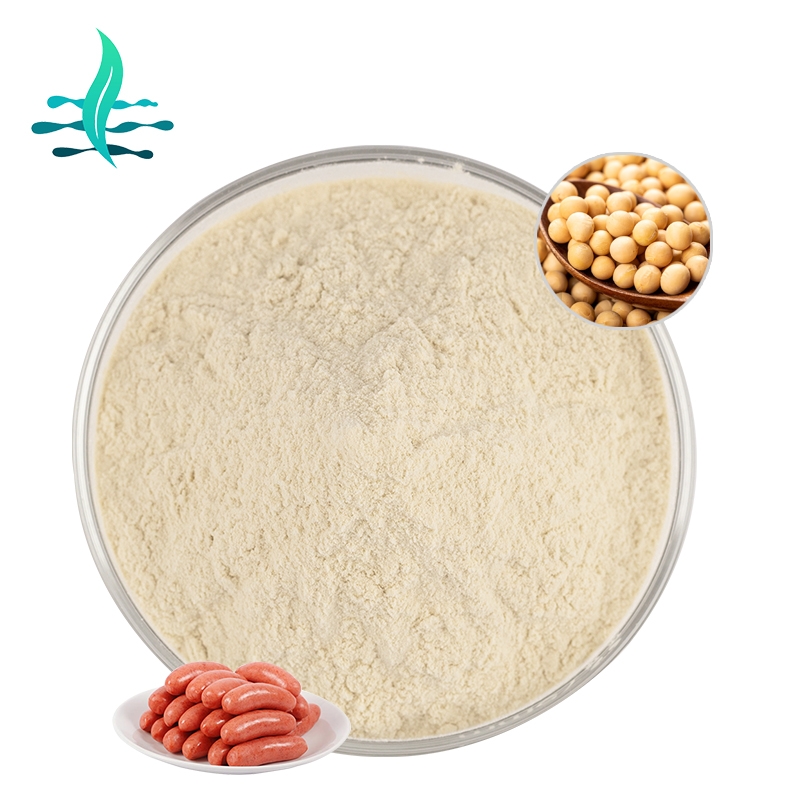-
Categories
-
Pharmaceutical Intermediates
-
Active Pharmaceutical Ingredients
-
Food Additives
- Industrial Coatings
- Agrochemicals
- Dyes and Pigments
- Surfactant
- Flavors and Fragrances
- Chemical Reagents
- Catalyst and Auxiliary
- Natural Products
- Inorganic Chemistry
-
Organic Chemistry
-
Biochemical Engineering
- Analytical Chemistry
- Cosmetic Ingredient
-
Pharmaceutical Intermediates
Promotion
ECHEMI Mall
Wholesale
Weekly Price
Exhibition
News
-
Trade Service
S.
Midwest The low temperature and rain have led to the slow pace of corn planting; the conflict between Russia and Ukraine may lead to a sharp decline in the corn planting area in Ukraine; China continues to buy US corn in large sums and continues to support corn prices ; Price increases are limited .
July 2022 corn futures on the Chicago Board of Trade (CBOT) settled at around $789 a bushel on Friday, up 5.
25 cents, or 0.
7%, from a week ago
.
Spot US Gulf No.
2 yellow corn was quoted at $8.
775 a bushel, down 15.
25 cents, or 1.
71%, from a week ago
.
June 2022 corn futures on the EURONEXT exchange settled at around €330.
75/tonne, down €2, or 0.
6%, from a week ago
.
Argentine corn is offered at $320/ton FOB in Shanghe, up $9 or 2.
9% from a week ago
.
The September 2022 corn futures on the Dalian Commodity Exchange closed at around 3,000 yuan/ton, up 41 yuan or 1.
4% from a week ago
.
International crude oil futures fell nearly 5% from a week ago, as weak global economic growth could hurt energy demand
.
The West Texas Intermediate (WTI) June contract on the New York Mercantile Exchange (NYMEX) settled at $102.
07 a barrel, down 4.
6% from a week ago
.
Global benchmark June Brent crude futures settled at $106.
65 a barrel, down 4%
.
The U.
S.
dollar index closed at 101.
12 on Friday, up 0.
8% from a week earlier and has gained 5.
4% so far this year
.
25 cents, or 0.
7%, from a week ago
.
Spot US Gulf No.
2 yellow corn was quoted at $8.
775 a bushel, down 15.
25 cents, or 1.
71%, from a week ago
.
June 2022 corn futures on the EURONEXT exchange settled at around €330.
75/tonne, down €2, or 0.
6%, from a week ago
.
Argentine corn is offered at $320/ton FOB in Shanghe, up $9 or 2.
9% from a week ago
.
The September 2022 corn futures on the Dalian Commodity Exchange closed at around 3,000 yuan/ton, up 41 yuan or 1.
4% from a week ago
.
International crude oil futures fell nearly 5% from a week ago, as weak global economic growth could hurt energy demand
.
The West Texas Intermediate (WTI) June contract on the New York Mercantile Exchange (NYMEX) settled at $102.
07 a barrel, down 4.
6% from a week ago
.
Global benchmark June Brent crude futures settled at $106.
65 a barrel, down 4%
.
The U.
S.
dollar index closed at 101.
12 on Friday, up 0.
8% from a week earlier and has gained 5.
4% so far this year
.
International Grains Council cuts global corn output, same day China buys U.
S.
corn
S.
corn
U.
S.
private exporters reported to the USDA on April 22 that 1.
347 million tons of U.
S.
corn were sold to China on April 21, of which 735,000 tons were delivered in 2021/22 and 612,000 tons were delivered in 2022/23
.
This is also the third time this month that China has purchased more than one million tons of U.
S.
corn
.
On April 11, the International Grains Council (IGC) first released its supply and demand forecast for the 2022/23 season (October-September), predicting that global corn production in the next year will be reduced to 1.
197 billion tons, down from 1.
210 billion tons in the current year.
, mainly due to lower corn production in Ukraine and the United States
.
The IGC forecasts that Ukrainian corn production in 2022/23 will fall to 18.
6 million tons from 41.
9 million tons in the previous year; U.
S.
corn production is expected to reach 376.
6 million tons, down from 383.
9 million tons in 2021/22
.
S.
private exporters reported to the USDA on April 22 that 1.
347 million tons of U.
S.
corn were sold to China on April 21, of which 735,000 tons were delivered in 2021/22 and 612,000 tons were delivered in 2022/23
.
This is also the third time this month that China has purchased more than one million tons of U.
S.
corn
.
On April 11, the International Grains Council (IGC) first released its supply and demand forecast for the 2022/23 season (October-September), predicting that global corn production in the next year will be reduced to 1.
197 billion tons, down from 1.
210 billion tons in the current year.
, mainly due to lower corn production in Ukraine and the United States
.
The IGC forecasts that Ukrainian corn production in 2022/23 will fall to 18.
6 million tons from 41.
9 million tons in the previous year; U.
S.
corn production is expected to reach 376.
6 million tons, down from 383.
9 million tons in 2021/22
.
On April 11, U.
S.
exporters reported to the USDA that they sold 1.
02 million tons of U.
S.
corn to China on April 8, with 680,000 tons for delivery in 2021/22 and 340,000 tons for delivery in 2022/3
.
The U.
S.
Department of Agriculture's April 8 supply and demand report lowered its forecast for Ukrainian corn exports by 4.
5 million
.
The same day the UN Food and Agriculture Organization reported that world food prices hit a record high in March
.
S.
exporters reported to the USDA that they sold 1.
02 million tons of U.
S.
corn to China on April 8, with 680,000 tons for delivery in 2021/22 and 340,000 tons for delivery in 2022/3
.
The U.
S.
Department of Agriculture's April 8 supply and demand report lowered its forecast for Ukrainian corn exports by 4.
5 million
.
The same day the UN Food and Agriculture Organization reported that world food prices hit a record high in March
.
On April 4, U.
S.
exporters reported to the USDA that they sold 1.
084 million tons of U.
S.
corn to China on April 1, including 676,000 tons for delivery in 2021/22 and 408,000 tons for 2022/3
.
The March 31 USDA Planting Intentions report showed that the U.
S.
corn acreage this year will be down 4% from a year earlier
.
Taking into account the ongoing conflict between Russia and Ukraine, Ukraine's recovery of Black Sea exports is far away, and the prospects for spring-sown corn area and production are bleak
.
That could prompt Chinese buyers to start this round of U.
S.
corn purchases
.
S.
exporters reported to the USDA that they sold 1.
084 million tons of U.
S.
corn to China on April 1, including 676,000 tons for delivery in 2021/22 and 408,000 tons for 2022/3
.
The March 31 USDA Planting Intentions report showed that the U.
S.
corn acreage this year will be down 4% from a year earlier
.
Taking into account the ongoing conflict between Russia and Ukraine, Ukraine's recovery of Black Sea exports is far away, and the prospects for spring-sown corn area and production are bleak
.
That could prompt Chinese buyers to start this round of U.
S.
corn purchases
.
According to customs data, China's corn imports in March 2022 were 2.
41 million tons, up 25% from the same period last year
.
Among them, the corn imported from Ukraine and Myanmar was higher than that of the same period of the previous year, and the import volume from the United States was the same as that of the same period of the previous year
.
China imported 1.
36 million tons of corn from Ukraine in March, up 64 percent year-on-year
.
Considering that the conflict between Russia and Ukraine at the end of February led to the closure of Ukraine's Black Sea ports, it means that China's corn imports from Ukraine in April will be significantly reduced
.
Ukraine’s Agriculture Ministry last week projected Ukraine to export 17 million tonnes of corn in 2021/22, down from the USDA’s forecast of 23 million tonnes
.
41 million tons, up 25% from the same period last year
.
Among them, the corn imported from Ukraine and Myanmar was higher than that of the same period of the previous year, and the import volume from the United States was the same as that of the same period of the previous year
.
China imported 1.
36 million tons of corn from Ukraine in March, up 64 percent year-on-year
.
Considering that the conflict between Russia and Ukraine at the end of February led to the closure of Ukraine's Black Sea ports, it means that China's corn imports from Ukraine in April will be significantly reduced
.
Ukraine’s Agriculture Ministry last week projected Ukraine to export 17 million tonnes of corn in 2021/22, down from the USDA’s forecast of 23 million tonnes
.
U.
S.
corn export sales still lag last year
S.
corn export sales still lag last year
Despite the disruption to Ukraine's exports, total U.
S.
corn export sales still lag last year
.
The U.
S.
Department of Agriculture's weekly export sales report showed that as of April 14, total U.
S.
corn export sales in 2021/22 were 56.
65 million tons, a decrease of 15.
7% year-on-year and equivalent to 89% of the USDA's full-year export target
.
As of April 21, the price of corn for recent shipments in the Gulf region was US$358 per ton, compared with US$354 per ton in Brazil's Paranagua port and US$320 per ton in Argentina's Upper River region
.
S.
corn export sales still lag last year
.
The U.
S.
Department of Agriculture's weekly export sales report showed that as of April 14, total U.
S.
corn export sales in 2021/22 were 56.
65 million tons, a decrease of 15.
7% year-on-year and equivalent to 89% of the USDA's full-year export target
.
As of April 21, the price of corn for recent shipments in the Gulf region was US$358 per ton, compared with US$354 per ton in Brazil's Paranagua port and US$320 per ton in Argentina's Upper River region
.
U.
S.
corn planting slow, weather outlook
S.
corn planting slow, weather outlook
The weather in the US Midwest continued to be cold and rainy, continuing to slow down the progress of corn planting
.
U.
S.
corn planting was 4 percent complete as of April 17, the U.
S.
Department of Agriculture said on Monday, 6 percent behind the five-year average and 5 percent behind analysts' forecasts
.
The U.
S.
Department of Agriculture expects U.
S.
corn acreage to fall 4 percent this year from the previous year, due to intense competition from other crops, such as soybeans and spring wheat, and soaring costs of inputs such as fertilizers
.
.
U.
S.
corn planting was 4 percent complete as of April 17, the U.
S.
Department of Agriculture said on Monday, 6 percent behind the five-year average and 5 percent behind analysts' forecasts
.
The U.
S.
Department of Agriculture expects U.
S.
corn acreage to fall 4 percent this year from the previous year, due to intense competition from other crops, such as soybeans and spring wheat, and soaring costs of inputs such as fertilizers
.
Ukraine's spring cereal plantings fall
The spring planting work in Ukraine has gradually started, but the continuation of the conflict between Russia and Ukraine and the dry weather, the sown area of crops this spring is expected to decrease significantly
.
As of April 21, Ukrainian farmers had sown 2.
5 million hectares of spring crops, equivalent to 20 percent of the expected area, the Agriculture Ministry said
.
In areas of intense conflict, however, spring cereal plantings could fall by 70 percent
.
About 20 percent of the crop won't be available for harvest in July, and spring plantings will be about one-third smaller than usual, said Jacob Korn, the WFP's emergency coordinator in Ukraine
.
.
As of April 21, Ukrainian farmers had sown 2.
5 million hectares of spring crops, equivalent to 20 percent of the expected area, the Agriculture Ministry said
.
In areas of intense conflict, however, spring cereal plantings could fall by 70 percent
.
About 20 percent of the crop won't be available for harvest in July, and spring plantings will be about one-third smaller than usual, said Jacob Korn, the WFP's emergency coordinator in Ukraine
.
Upbeat outlook for Brazil's second-crop corn crop, but variables remain
So far, Brazil's second-crop corn production is in good shape, and analysts generally expect the output to reach 88.
5 million tons, much higher than the previous year's average
.
But forecasts point to dry conditions in central Brazil for the second half of April, with Mato Grosso, Mato Grosso do Sul, Goias, Minas Gerais and São Paulo until at least early May.
The weather will remain dry, which could limit corn yield potential
.
5 million tons, much higher than the previous year's average
.
But forecasts point to dry conditions in central Brazil for the second half of April, with Mato Grosso, Mato Grosso do Sul, Goias, Minas Gerais and São Paulo until at least early May.
The weather will remain dry, which could limit corn yield potential
.
In addition, farmers in Brazil have been slow to sell soybeans this year, mainly because soybean production is lower than earlier expected, and farmers expect soybean prices to rise further
.
Slow soybean sales could create storage problems when corn hits the market
.
.
Slow soybean sales could create storage problems when corn hits the market
.
Freight and fertilizer prices rise
U.
S.
fertilizer prices have maintained an upward trend so far this year, especially phosphate fertilizers and urea.
Urea prices have hit a record high of $1,017 per ton, and DAP fertilizer prices have risen to a record high of $1,047 per ton
.
S.
fertilizer prices have maintained an upward trend so far this year, especially phosphate fertilizers and urea.
Urea prices have hit a record high of $1,017 per ton, and DAP fertilizer prices have risen to a record high of $1,047 per ton
.
Esben Poulsson, president of the International Chamber of Shipping (ICS), said the conflict in Ukraine would put further pressure on importing countries in Africa and Asia, as fewer ships were carrying cargo, prompting higher shipping rates
.
About 80 to 100 ships, mostly bulk carriers, have been stranded in Ukrainian waters for nearly two months due to mines and military blockades
.
Bulk freight rates are rising as shipowners and charterers price in the prospect of prolonged detention
.
The surge in shipping costs could further push up food costs, create more inflationary pain for consumers and exacerbate a global food supply crisis
.
.
About 80 to 100 ships, mostly bulk carriers, have been stranded in Ukrainian waters for nearly two months due to mines and military blockades
.
Bulk freight rates are rising as shipowners and charterers price in the prospect of prolonged detention
.
The surge in shipping costs could further push up food costs, create more inflationary pain for consumers and exacerbate a global food supply crisis
.
However, Brazil's fertilizer supply is not yet in short supply
.
Previously ordered Russian fertilizers are being shipped to Brazil, helping to normalize grain cultivation in Brazil
.
Preliminary shipping data on Monday showed that at least 24 cargo ships carrying nearly 678,000 tonnes of Russian fertilizers departed from the country's ports and are expected to arrive in Brazil in the coming weeks
.
.
Previously ordered Russian fertilizers are being shipped to Brazil, helping to normalize grain cultivation in Brazil
.
Preliminary shipping data on Monday showed that at least 24 cargo ships carrying nearly 678,000 tonnes of Russian fertilizers departed from the country's ports and are expected to arrive in Brazil in the coming weeks
.







